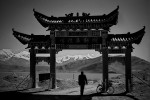 ON THE SILK ROAD
ON THE SILK ROAD
These pictures, all shot on film, were made with no assignment in hand and no particular desire to even make a coherent body of work. Just a sketch book made with the impressions of almost 9000 kilometers traveled by sleeper train, where I lived for more than one month. I was very impressed by the great difference in lifestyle and economic conditions between the Han (the majority ethnic group), the Tibetans in Labrang and the Uighurs (muslims) in Kashgar, home of the one of the most important markets, where every Sunday hundreds of farmers go to sell their goods. Located near the border with Tajikistan, Kyrgyzstan and the Taklamakan Desert, also known as the place of oblivion.
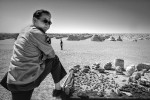 ON THE SILK ROAD
ON THE SILK ROAD
These pictures, all shot on film, were made with no assignment in hand and no particular desire to even make a coherent body of work. Just a sketch book made with the impressions of almost 9000 kilometers traveled by sleeper train, where I lived for more than one month. I was very impressed by the great difference in lifestyle and economic conditions between the Han (the majority ethnic group), the Tibetans in Labrang and the Uighurs (muslims) in Kashgar, home of the one of the most important markets, where every Sunday hundreds of farmers go to sell their goods. Located near the border with Tajikistan, Kyrgyzstan and the Taklamakan Desert, also known as the place of oblivion.
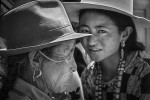 ON THE SILK ROAD
ON THE SILK ROAD
These pictures, all shot on film, were made with no assignment in hand and no particular desire to even make a coherent body of work. Just a sketch book made with the impressions of almost 9000 kilometers traveled by sleeper train, where I lived for more than one month. I was very impressed by the great difference in lifestyle and economic conditions between the Han (the majority ethnic group), the Tibetans in Labrang and the Uighurs (muslims) in Kashgar, home of the one of the most important markets, where every Sunday hundreds of farmers go to sell their goods. Located near the border with Tajikistan, Kyrgyzstan and the Taklamakan Desert, also known as the place of oblivion.
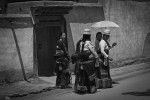 ON THE SILK ROAD
ON THE SILK ROAD
These pictures, all shot on film, were made with no assignment in hand and no particular desire to even make a coherent body of work. Just a sketch book made with the impressions of almost 9000 kilometers traveled by sleeper train, where I lived for more than one month. I was very impressed by the great difference in lifestyle and economic conditions between the Han (the majority ethnic group), the Tibetans in Labrang and the Uighurs (muslims) in Kashgar, home of the one of the most important markets, where every Sunday hundreds of farmers go to sell their goods. Located near the border with Tajikistan, Kyrgyzstan and the Taklamakan Desert, also known as the place of oblivion.
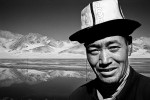 ON THE SILK ROAD
ON THE SILK ROAD
These pictures, all shot on film, were made with no assignment in hand and no particular desire to even make a coherent body of work. Just a sketch book made with the impressions of almost 9000 kilometers traveled by sleeper train, where I lived for more than one month. I was very impressed by the great difference in lifestyle and economic conditions between the Han (the majority ethnic group), the Tibetans in Labrang and the Uighurs (muslims) in Kashgar, home of the one of the most important markets, where every Sunday hundreds of farmers go to sell their goods. Located near the border with Tajikistan, Kyrgyzstan and the Taklamakan Desert, also known as the place of oblivion.
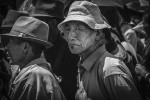 ON THE SILK ROAD
ON THE SILK ROAD
These pictures, all shot on film, were made with no assignment in hand and no particular desire to even make a coherent body of work. Just a sketch book made with the impressions of almost 9000 kilometers traveled by sleeper train, where I lived for more than one month. I was very impressed by the great difference in lifestyle and economic conditions between the Han (the majority ethnic group), the Tibetans in Labrang and the Uighurs (muslims) in Kashgar, home of the one of the most important markets, where every Sunday hundreds of farmers go to sell their goods. Located near the border with Tajikistan, Kyrgyzstan and the Taklamakan Desert, also known as the place of oblivion.
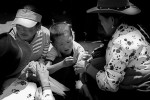 ON THE SILK ROAD
ON THE SILK ROAD
These pictures, all shot on film, were made with no assignment in hand and no particular desire to even make a coherent body of work. Just a sketch book made with the impressions of almost 9000 kilometers traveled by sleeper train, where I lived for more than one month. I was very impressed by the great difference in lifestyle and economic conditions between the Han (the majority ethnic group), the Tibetans in Labrang and the Uighurs (muslims) in Kashgar, home of the one of the most important markets, where every Sunday hundreds of farmers go to sell their goods. Located near the border with Tajikistan, Kyrgyzstan and the Taklamakan Desert, also known as the place of oblivion.
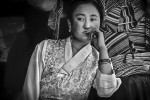 ON THE SILK ROAD
ON THE SILK ROAD
These pictures, all shot on film, were made with no assignment in hand and no particular desire to even make a coherent body of work. Just a sketch book made with the impressions of almost 9000 kilometers traveled by sleeper train, where I lived for more than one month. I was very impressed by the great difference in lifestyle and economic conditions between the Han (the majority ethnic group), the Tibetans in Labrang and the Uighurs (muslims) in Kashgar, home of the one of the most important markets, where every Sunday hundreds of farmers go to sell their goods. Located near the border with Tajikistan, Kyrgyzstan and the Taklamakan Desert, also known as the place of oblivion.
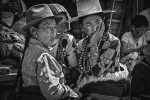 ON THE SILK ROAD
ON THE SILK ROAD
These pictures, all shot on film, were made with no assignment in hand and no particular desire to even make a coherent body of work. Just a sketch book made with the impressions of almost 9000 kilometers traveled by sleeper train, where I lived for more than one month. I was very impressed by the great difference in lifestyle and economic conditions between the Han (the majority ethnic group), the Tibetans in Labrang and the Uighurs (muslims) in Kashgar, home of the one of the most important markets, where every Sunday hundreds of farmers go to sell their goods. Located near the border with Tajikistan, Kyrgyzstan and the Taklamakan Desert, also known as the place of oblivion.
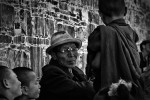 ON THE SILK ROAD
ON THE SILK ROAD
These pictures, all shot on film, were made with no assignment in hand and no particular desire to even make a coherent body of work. Just a sketch book made with the impressions of almost 9000 kilometers traveled by sleeper train, where I lived for more than one month. I was very impressed by the great difference in lifestyle and economic conditions between the Han (the majority ethnic group), the Tibetans in Labrang and the Uighurs (muslims) in Kashgar, home of the one of the most important markets, where every Sunday hundreds of farmers go to sell their goods. Located near the border with Tajikistan, Kyrgyzstan and the Taklamakan Desert, also known as the place of oblivion.
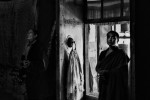 ON THE SILK ROAD
ON THE SILK ROAD
These pictures, all shot on film, were made with no assignment in hand and no particular desire to even make a coherent body of work. Just a sketch book made with the impressions of almost 9000 kilometers traveled by sleeper train, where I lived for more than one month. I was very impressed by the great difference in lifestyle and economic conditions between the Han (the majority ethnic group), the Tibetans in Labrang and the Uighurs (muslims) in Kashgar, home of the one of the most important markets, where every Sunday hundreds of farmers go to sell their goods. Located near the border with Tajikistan, Kyrgyzstan and the Taklamakan Desert, also known as the place of oblivion.
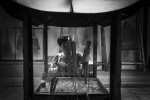 On THE SILK ROAD
On THE SILK ROAD
These pictures, all shot on film, were made with no assignment in hand and no particular desire to even make a coherent body of work. Just a sketch book made with the impressions of almost 9000 kilometers traveled by sleeper train, where I lived for more than one month. I was very impressed by the great difference in lifestyle and economic conditions between the Han (the majority ethnic group), the Tibetans in Labrang and the Uighurs (muslims) in Kashgar, home of the one of the most important markets, where every Sunday hundreds of farmers go to sell their goods. Located near the border with Tajikistan, Kyrgyzstan and the Taklamakan Desert, also known as the place of oblivion.
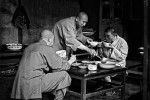 ON THE SILK ROAD
ON THE SILK ROAD
These pictures, all shot on film, were made with no assignment in hand and no particular desire to even make a coherent body of work. Just a sketch book made with the impressions of almost 9000 kilometers traveled by sleeper train, where I lived for more than one month. I was very impressed by the great difference in lifestyle and economic conditions between the Han (the majority ethnic group), the Tibetans in Labrang and the Uighurs (muslims) in Kashgar, home of the one of the most important markets, where every Sunday hundreds of farmers go to sell their goods. Located near the border with Tajikistan, Kyrgyzstan and the Taklamakan Desert, also known as the place of oblivion.
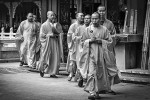 ON THE SILK ROAD
ON THE SILK ROAD
These pictures, all shot on film, were made with no assignment in hand and no particular desire to even make a coherent body of work. Just a sketch book made with the impressions of almost 9000 kilometers traveled by sleeper train, where I lived for more than one month. I was very impressed by the great difference in lifestyle and economic conditions between the Han (the majority ethnic group), the Tibetans in Labrang and the Uighurs (muslims) in Kashgar, home of the one of the most important markets, where every Sunday hundreds of farmers go to sell their goods. Located near the border with Tajikistan, Kyrgyzstan and the Taklamakan Desert, also known as the place of oblivion.
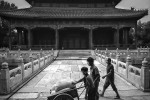 ON THE SILK ROAD
ON THE SILK ROAD
These pictures, all shot on film, were made with no assignment in hand and no particular desire to even make a coherent body of work. Just a sketch book made with the impressions of almost 9000 kilometers traveled by sleeper train, where I lived for more than one month. I was very impressed by the great difference in lifestyle and economic conditions between the Han (the majority ethnic group), the Tibetans in Labrang and the Uighurs (muslims) in Kashgar, home of the one of the most important markets, where every Sunday hundreds of farmers go to sell their goods. Located near the border with Tajikistan, Kyrgyzstan and the Taklamakan Desert, also known as the place of oblivion.
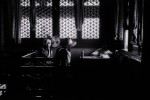 ON THE SILK ROAD
ON THE SILK ROAD
These pictures, all shot on film, were made with no assignment in hand and no particular desire to even make a coherent body of work. Just a sketch book made with the impressions of almost 9000 kilometers traveled by sleeper train, where I lived for more than one month. I was very impressed by the great difference in lifestyle and economic conditions between the Han (the majority ethnic group), the Tibetans in Labrang and the Uighurs (muslims) in Kashgar, home of the one of the most important markets, where every Sunday hundreds of farmers go to sell their goods. Located near the border with Tajikistan, Kyrgyzstan and the Taklamakan Desert, also known as the place of oblivion.
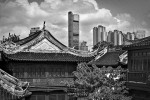
These pictures, all shot on film, were made with no assignment in hand and no particular desire to even make a coherent body of work. Just a sketch book made with the impressions of almost 9000 kilometers traveled by sleeper train, where I lived for more than one month. I was very impressed by the great difference in lifestyle and economic conditions between the Han (the majority ethnic group), the Tibetans in Labrang and the Uighurs (muslims) in Kashgar, home of the one of the most important markets, where every Sunday hundreds of farmers go to sell their goods. Located near the border with Tajikistan, Kyrgyzstan and the Taklamakan Desert, also known as the place of oblivion.
 ON THE SILK ROAD
ON THE SILK ROAD
These pictures, all shot on film, were made with no assignment in hand and no particular desire to even make a coherent body of work. Just a sketch book made with the impressions of almost 9000 kilometers traveled by sleeper train, where I lived for more than one month. I was very impressed by the great difference in lifestyle and economic conditions between the Han (the majority ethnic group), the Tibetans in Labrang and the Uighurs (muslims) in Kashgar, home of the one of the most important markets, where every Sunday hundreds of farmers go to sell their goods. Located near the border with Tajikistan, Kyrgyzstan and the Taklamakan Desert, also known as the place of oblivion.
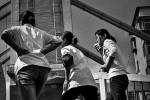 ON THE SILK ROAD
ON THE SILK ROAD
These pictures, all shot on film, were made with no assignment in hand and no particular desire to even make a coherent body of work. Just a sketch book made with the impressions of almost 9000 kilometers traveled by sleeper train, where I lived for more than one month. I was very impressed by the great difference in lifestyle and economic conditions between the Han (the majority ethnic group), the Tibetans in Labrang and the Uighurs (muslims) in Kashgar, home of the one of the most important markets, where every Sunday hundreds of farmers go to sell their goods. Located near the border with Tajikistan, Kyrgyzstan and the Taklamakan Desert, also known as the place of oblivion.
 ON THE SILK ROAD
ON THE SILK ROAD
These pictures, all shot on film, were made with no assignment in hand and no particular desire to even make a coherent body of work. Just a sketch book made with the impressions of almost 9000 kilometers traveled by sleeper train, where I lived for more than one month. I was very impressed by the great difference in lifestyle and economic conditions between the Han (the majority ethnic group), the Tibetans in Labrang and the Uighurs (muslims) in Kashgar, home of the one of the most important markets, where every Sunday hundreds of farmers go to sell their goods. Located near the border with Tajikistan, Kyrgyzstan and the Taklamakan Desert, also known as the place of oblivion.
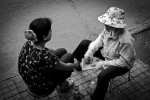 ON THE SILK ROAD
ON THE SILK ROAD
These pictures, all shot on film, were made with no assignment in hand and no particular desire to even make a coherent body of work. Just a sketch book made with the impressions of almost 9000 kilometers traveled by sleeper train, where I lived for more than one month. I was very impressed by the great difference in lifestyle and economic conditions between the Han (the majority ethnic group), the Tibetans in Labrang and the Uighurs (muslims) in Kashgar, home of the one of the most important markets, where every Sunday hundreds of farmers go to sell their goods. Located near the border with Tajikistan, Kyrgyzstan and the Taklamakan Desert, also known as the place of oblivion.
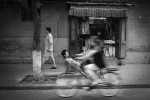 ON THE SILK ROAD
ON THE SILK ROAD
These pictures, all shot on film, were made with no assignment in hand and no particular desire to even make a coherent body of work. Just a sketch book made with the impressions of almost 9000 kilometers traveled by sleeper train, where I lived for more than one month. I was very impressed by the great difference in lifestyle and economic conditions between the Han (the majority ethnic group), the Tibetans in Labrang and the Uighurs (muslims) in Kashgar, home of the one of the most important markets, where every Sunday hundreds of farmers go to sell their goods. Located near the border with Tajikistan, Kyrgyzstan and the Taklamakan Desert, also known as the place of oblivion.
 ON THE SILK ROAD
ON THE SILK ROAD
These pictures, all shot on film, were made with no assignment in hand and no particular desire to even make a coherent body of work. Just a sketch book made with the impressions of almost 9000 kilometers traveled by sleeper train, where I lived for more than one month. I was very impressed by the great difference in lifestyle and economic conditions between the Han (the majority ethnic group), the Tibetans in Labrang and the Uighurs (muslims) in Kashgar, home of the one of the most important markets, where every Sunday hundreds of farmers go to sell their goods. Located near the border with Tajikistan, Kyrgyzstan and the Taklamakan Desert, also known as the place of oblivion.
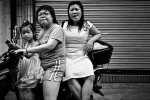 ON THE SILK ROAD
ON THE SILK ROAD
These pictures, all shot on film, were made with no assignment in hand and no particular desire to even make a coherent body of work. Just a sketch book made with the impressions of almost 9000 kilometers traveled by sleeper train, where I lived for more than one month. I was very impressed by the great difference in lifestyle and economic conditions between the Han (the majority ethnic group), the Tibetans in Labrang and the Uighurs (muslims) in Kashgar, home of the one of the most important markets, where every Sunday hundreds of farmers go to sell their goods. Located near the border with Tajikistan, Kyrgyzstan and the Taklamakan Desert, also known as the place of oblivion.
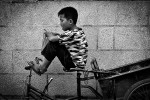 ON THE SILK ROAD
ON THE SILK ROAD
These pictures, all shot on film, were made with no assignment in hand and no particular desire to even make a coherent body of work. Just a sketch book made with the impressions of almost 9000 kilometers traveled by sleeper train, where I lived for more than one month. I was very impressed by the great difference in lifestyle and economic conditions between the Han (the majority ethnic group), the Tibetans in Labrang and the Uighurs (muslims) in Kashgar, home of the one of the most important markets, where every Sunday hundreds of farmers go to sell their goods. Located near the border with Tajikistan, Kyrgyzstan and the Taklamakan Desert, also known as the place of oblivion.
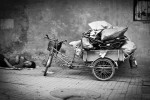
These pictures, all shot on film, were made with no assignment in hand and no particular desire to even make a coherent body of work. Just a sketch book made with the impressions of almost 9000 kilometers traveled by sleeper train, where I lived for more than one month. I was very impressed by the great difference in lifestyle and economic conditions between the Han (the majority ethnic group), the Tibetans in Labrang and the Uighurs (muslims) in Kashgar, home of the one of the most important markets, where every Sunday hundreds of farmers go to sell their goods. Located near the border with Tajikistan, Kyrgyzstan and the Taklamakan Desert, also known as the place of oblivion.
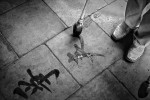 ON THE SILK ROAD
ON THE SILK ROAD
These pictures, all shot on film, were made with no assignment in hand and no particular desire to even make a coherent body of work. Just a sketch book made with the impressions of almost 9000 kilometers traveled by sleeper train, where I lived for more than one month. I was very impressed by the great difference in lifestyle and economic conditions between the Han (the majority ethnic group), the Tibetans in Labrang and the Uighurs (muslims) in Kashgar, home of the one of the most important markets, where every Sunday hundreds of farmers go to sell their goods. Located near the border with Tajikistan, Kyrgyzstan and the Taklamakan Desert, also known as the place of oblivion.
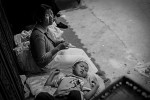 ON THE SILK ROAD
ON THE SILK ROAD
These pictures, all shot on film, were made with no assignment in hand and no particular desire to even make a coherent body of work. Just a sketch book made with the impressions of almost 9000 kilometers traveled by sleeper train, where I lived for more than one month. I was very impressed by the great difference in lifestyle and economic conditions between the Han (the majority ethnic group), the Tibetans in Labrang and the Uighurs (muslims) in Kashgar, home of the one of the most important markets, where every Sunday hundreds of farmers go to sell their goods. Located near the border with Tajikistan, Kyrgyzstan and the Taklamakan Desert, also known as the place of oblivion.
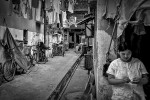 ON THE SILK ROAD
ON THE SILK ROAD
These pictures, all shot on film, were made with no assignment in hand and no particular desire to even make a coherent body of work. Just a sketch book made with the impressions of almost 9000 kilometers traveled by sleeper train, where I lived for more than one month. I was very impressed by the great difference in lifestyle and economic conditions between the Han (the majority ethnic group), the Tibetans in Labrang and the Uighurs (muslims) in Kashgar, home of the one of the most important markets, where every Sunday hundreds of farmers go to sell their goods. Located near the border with Tajikistan, Kyrgyzstan and the Taklamakan Desert, also known as the place of oblivion.
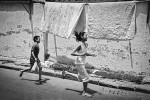 ON THE SILK ROAD
ON THE SILK ROAD
These pictures, all shot on film, were made with no assignment in hand and no particular desire to even make a coherent body of work. Just a sketch book made with the impressions of almost 9000 kilometers traveled by sleeper train, where I lived for more than one month. I was very impressed by the great difference in lifestyle and economic conditions between the Han (the majority ethnic group), the Tibetans in Labrang and the Uighurs (muslims) in Kashgar, home of the one of the most important markets, where every Sunday hundreds of farmers go to sell their goods. Located near the border with Tajikistan, Kyrgyzstan and the Taklamakan Desert, also known as the place of oblivion.
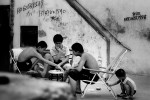 ON THE SILK ROAD
ON THE SILK ROAD
These pictures, all shot on film, were made with no assignment in hand and no particular desire to even make a coherent body of work. Just a sketch book made with the impressions of almost 9000 kilometers traveled by sleeper train, where I lived for more than one month. I was very impressed by the great difference in lifestyle and economic conditions between the Han (the majority ethnic group), the Tibetans in Labrang and the Uighurs (muslims) in Kashgar, home of the one of the most important markets, where every Sunday hundreds of farmers go to sell their goods. Located near the border with Tajikistan, Kyrgyzstan and the Taklamakan Desert, also known as the place of oblivion.
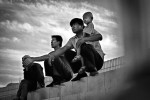 ON THE SILK ROAD
ON THE SILK ROAD
These pictures, all shot on film, were made with no assignment in hand and no particular desire to even make a coherent body of work. Just a sketch book made with the impressions of almost 9000 kilometers traveled by sleeper train, where I lived for more than one month. I was very impressed by the great difference in lifestyle and economic conditions between the Han (the majority ethnic group), the Tibetans in Labrang and the Uighurs (muslims) in Kashgar, home of the one of the most important markets, where every Sunday hundreds of farmers go to sell their goods. Located near the border with Tajikistan, Kyrgyzstan and the Taklamakan Desert, also known as the place of oblivion.
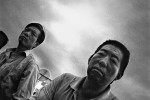 ON THE SILK ROAD
ON THE SILK ROAD
These pictures, all shot on film, were made with no assignment in hand and no particular desire to even make a coherent body of work. Just a sketch book made with the impressions of almost 9000 kilometers traveled by sleeper train, where I lived for more than one month. I was very impressed by the great difference in lifestyle and economic conditions between the Han (the majority ethnic group), the Tibetans in Labrang and the Uighurs (muslims) in Kashgar, home of the one of the most important markets, where every Sunday hundreds of farmers go to sell their goods. Located near the border with Tajikistan, Kyrgyzstan and the Taklamakan Desert, also known as the place of oblivion.
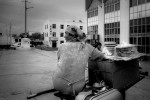 ON THE SILK ROAD
ON THE SILK ROAD
These pictures, all shot on film, were made with no assignment in hand and no particular desire to even make a coherent body of work. Just a sketch book made with the impressions of almost 9000 kilometers traveled by sleeper train, where I lived for more than one month. I was very impressed by the great difference in lifestyle and economic conditions between the Han (the majority ethnic group), the Tibetans in Labrang and the Uighurs (muslims) in Kashgar, home of the one of the most important markets, where every Sunday hundreds of farmers go to sell their goods. Located near the border with Tajikistan, Kyrgyzstan and the Taklamakan Desert, also known as the place of oblivion.
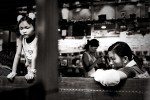 ON THE SILK ROAD
ON THE SILK ROAD
These pictures, all shot on film, were made with no assignment in hand and no particular desire to even make a coherent body of work. Just a sketch book made with the impressions of almost 9000 kilometers traveled by sleeper train, where I lived for more than one month. I was very impressed by the great difference in lifestyle and economic conditions between the Han (the majority ethnic group), the Tibetans in Labrang and the Uighurs (muslims) in Kashgar, home of the one of the most important markets, where every Sunday hundreds of farmers go to sell their goods. Located near the border with Tajikistan, Kyrgyzstan and the Taklamakan Desert, also known as the place of oblivion.
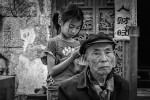 ON THE SILK ROAD
ON THE SILK ROAD
These pictures, all shot on film, were made with no assignment in hand and no particular desire to even make a coherent body of work. Just a sketch book made with the impressions of almost 9000 kilometers traveled by sleeper train, where I lived for more than one month. I was very impressed by the great difference in lifestyle and economic conditions between the Han (the majority ethnic group), the Tibetans in Labrang and the Uighurs (muslims) in Kashgar, home of the one of the most important markets, where every Sunday hundreds of farmers go to sell their goods. Located near the border with Tajikistan, Kyrgyzstan and the Taklamakan Desert, also known as the place of oblivion.
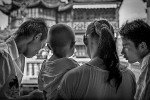 ON THE SILK ROAD
ON THE SILK ROAD
These pictures, all shot on film, were made with no assignment in hand and no particular desire to even make a coherent body of work. Just a sketch book made with the impressions of almost 9000 kilometers traveled by sleeper train, where I lived for more than one month. I was very impressed by the great difference in lifestyle and economic conditions between the Han (the majority ethnic group), the Tibetans in Labrang and the Uighurs (muslims) in Kashgar, home of the one of the most important markets, where every Sunday hundreds of farmers go to sell their goods. Located near the border with Tajikistan, Kyrgyzstan and the Taklamakan Desert, also known as the place of oblivion.
 ON THE SILK ROAD
ON THE SILK ROAD
These pictures, all shot on film, were made with no assignment in hand and no particular desire to even make a coherent body of work. Just a sketch book made with the impressions of almost 9000 kilometers traveled by sleeper train, where I lived for more than one month. I was very impressed by the great difference in lifestyle and economic conditions between the Han (the majority ethnic group), the Tibetans in Labrang and the Uighurs (muslims) in Kashgar, home of the one of the most important markets, where every Sunday hundreds of farmers go to sell their goods. Located near the border with Tajikistan, Kyrgyzstan and the Taklamakan Desert, also known as the place of oblivion.
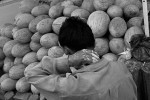 ON THE SILK ROAD
ON THE SILK ROAD
These pictures, all shot on film, were made with no assignment in hand and no particular desire to even make a coherent body of work. Just a sketch book made with the impressions of almost 9000 kilometers traveled by sleeper train, where I lived for more than one month. I was very impressed by the great difference in lifestyle and economic conditions between the Han (the majority ethnic group), the Tibetans in Labrang and the Uighurs (muslims) in Kashgar, home of the one of the most important markets, where every Sunday hundreds of farmers go to sell their goods. Located near the border with Tajikistan, Kyrgyzstan and the Taklamakan Desert, also known as the place of oblivion.
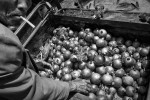 ON THE SILK ROAD
ON THE SILK ROAD
These pictures, all shot on film, were made with no assignment in hand and no particular desire to even make a coherent body of work. Just a sketch book made with the impressions of almost 9000 kilometers traveled by sleeper train, where I lived for more than one month. I was very impressed by the great difference in lifestyle and economic conditions between the Han (the majority ethnic group), the Tibetans in Labrang and the Uighurs (muslims) in Kashgar, home of the one of the most important markets, where every Sunday hundreds of farmers go to sell their goods. Located near the border with Tajikistan, Kyrgyzstan and the Taklamakan Desert, also known as the place of oblivion.
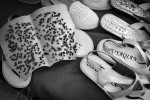 ON THE SILK ROAD
ON THE SILK ROAD
These pictures, all shot on film, were made with no assignment in hand and no particular desire to even make a coherent body of work. Just a sketch book made with the impressions of almost 9000 kilometers traveled by sleeper train, where I lived for more than one month. I was very impressed by the great difference in lifestyle and economic conditions between the Han (the majority ethnic group), the Tibetans in Labrang and the Uighurs (muslims) in Kashgar, home of the one of the most important markets, where every Sunday hundreds of farmers go to sell their goods. Located near the border with Tajikistan, Kyrgyzstan and the Taklamakan Desert, also known as the place of oblivion.
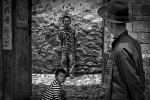 ON THE SILK ROAD
ON THE SILK ROAD
These pictures, all shot on film, were made with no assignment in hand and no particular desire to even make a coherent body of work. Just a sketch book made with the impressions of almost 9000 kilometers traveled by sleeper train, where I lived for more than one month. I was very impressed by the great difference in lifestyle and economic conditions between the Han (the majority ethnic group), the Tibetans in Labrang and the Uighurs (muslims) in Kashgar, home of the one of the most important markets, where every Sunday hundreds of farmers go to sell their goods. Located near the border with Tajikistan, Kyrgyzstan and the Taklamakan Desert, also known as the place of oblivion.
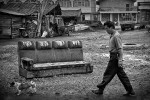 ON THE SILK ROAD
ON THE SILK ROAD
These pictures, all shot on film, were made with no assignment in hand and no particular desire to even make a coherent body of work. Just a sketch book made with the impressions of almost 9000 kilometers traveled by sleeper train, where I lived for more than one month. I was very impressed by the great difference in lifestyle and economic conditions between the Han (the majority ethnic group), the Tibetans in Labrang and the Uighurs (muslims) in Kashgar, home of the one of the most important markets, where every Sunday hundreds of farmers go to sell their goods. Located near the border with Tajikistan, Kyrgyzstan and the Taklamakan Desert, also known as the place of oblivion.
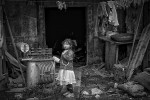 ON THE SILK ROAD
ON THE SILK ROAD
These pictures, all shot on film, were made with no assignment in hand and no particular desire to even make a coherent body of work. Just a sketch book made with the impressions of almost 9000 kilometers traveled by sleeper train, where I lived for more than one month. I was very impressed by the great difference in lifestyle and economic conditions between the Han (the majority ethnic group), the Tibetans in Labrang and the Uighurs (muslims) in Kashgar, home of the one of the most important markets, where every Sunday hundreds of farmers go to sell their goods. Located near the border with Tajikistan, Kyrgyzstan and the Taklamakan Desert, also known as the place of oblivion.
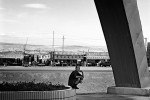 ON THE SILK ROAD
ON THE SILK ROAD
These pictures, all shot on film, were made with no assignment in hand and no particular desire to even make a coherent body of work. Just a sketch book made with the impressions of almost 9000 kilometers traveled by sleeper train, where I lived for more than one month. I was very impressed by the great difference in lifestyle and economic conditions between the Han (the majority ethnic group), the Tibetans in Labrang and the Uighurs (muslims) in Kashgar, home of the one of the most important markets, where every Sunday hundreds of farmers go to sell their goods. Located near the border with Tajikistan, Kyrgyzstan and the Taklamakan Desert, also known as the place of oblivion.
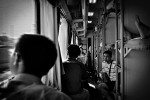 ON THE SILK ROAD
ON THE SILK ROAD
These pictures, all shot on film, were made with no assignment in hand and no particular desire to even make a coherent body of work. Just a sketch book made with the impressions of almost 9000 kilometers traveled by sleeper train, where I lived for more than one month. I was very impressed by the great difference in lifestyle and economic conditions between the Han (the majority ethnic group), the Tibetans in Labrang and the Uighurs (muslims) in Kashgar, home of the one of the most important markets, where every Sunday hundreds of farmers go to sell their goods. Located near the border with Tajikistan, Kyrgyzstan and the Taklamakan Desert, also known as the place of oblivion.

These pictures, all shot on film, were made with no assignment in hand and no particular desire to even make a coherent body of work. Just a sketch book made with the impressions of almost 9000 kilometers traveled by sleeper train, where I lived for more than one month. I was very impressed by the great difference in lifestyle and economic conditions between the Han (the majority ethnic group), the Tibetans in Labrang and the Uighurs (muslims) in Kashgar, home of the one of the most important markets, where every Sunday hundreds of farmers go to sell their goods. Located near the border with Tajikistan, Kyrgyzstan and the Taklamakan Desert, also known as the place of oblivion.
 EXHIBITION
EXHIBITION
THIS EXHIBITION WAS SPONSORED BY MONTE DEI PASCHI DI SIENA, ONE OF THE MAJOR ITALIAN BANKS, LEGA AMBIENTE AND TOSCANA REGION. AND IT TOOK PLACE AT THE MUNICIPALITY OF MONTEPULCIANO. IT WAS ENTITLED THE INTERDEPENDENCE DAYS A CULTURAL EXCHANGE BETWEEN ITALY AND CHINA.
 ON THE SILK ROAD
ON THE SILK ROAD
These pictures, all shot on film, were made with no assignment in hand and no particular desire to even make a coherent body of work. Just a sketch book made with the impressions of almost 9000 kilometers traveled by sleeper train, where I lived for more than one month. I was very impressed by the great difference in lifestyle and economic conditions between the Han (the majority ethnic group), the Tibetans in Labrang and the Uighurs (muslims) in Kashgar, home of the one of the most important markets, where every Sunday hundreds of farmers go to sell their goods. Located near the border with Tajikistan, Kyrgyzstan and the Taklamakan Desert, also known as the place of oblivion.
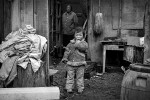 ON THE SILK ROAD
ON THE SILK ROAD
These pictures, all shot on film, were made with no assignment in hand and no particular desire to even make a coherent body of work. Just a sketch book made with the impressions of almost 9000 kilometers traveled by sleeper train, where I lived for more than one month. I was very impressed by the great difference in lifestyle and economic conditions between the Han (the majority ethnic group), the Tibetans in Labrang and the Uighurs (muslims) in Kashgar, home of the one of the most important markets, where every Sunday hundreds of farmers go to sell their goods. Located near the border with Tajikistan, Kyrgyzstan and the Taklamakan Desert, also known as the place of oblivion.
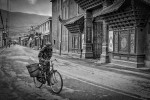 ON THE SILK ROAD
ON THE SILK ROAD
These pictures, all shot on film, were made with no assignment in hand and no particular desire to even make a coherent body of work. Just a sketch book made with the impressions of almost 9000 kilometers traveled by sleeper train, where I lived for more than one month. I was very impressed by the great difference in lifestyle and economic conditions between the Han (the majority ethnic group), the Tibetans in Labrang and the Uighurs (muslims) in Kashgar, home of the one of the most important markets, where every Sunday hundreds of farmers go to sell their goods. Located near the border with Tajikistan, Kyrgyzstan and the Taklamakan Desert, also known as the place of oblivion.
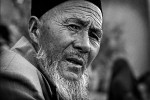 ON THE SILK ROAD
ON THE SILK ROAD
These pictures, all shot on film, were made with no assignment in hand and no particular desire to even make a coherent body of work. Just a sketch book made with the impressions of almost 9000 kilometers traveled by sleeper train, where I lived for more than one month. I was very impressed by the great difference in lifestyle and economic conditions between the Han (the majority ethnic group), the Tibetans in Labrang and the Uighurs (muslims) in Kashgar, home of the one of the most important markets, where every Sunday hundreds of farmers go to sell their goods. Located near the border with Tajikistan, Kyrgyzstan and the Taklamakan Desert, also known as the place of oblivion.
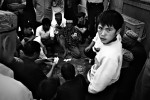
These pictures, all shot on film, were made with no assignment in hand and no particular desire to even make a coherent body of work. Just a sketch book made with the impressions of almost 9000 kilometers traveled by sleeper train, where I lived for more than one month. I was very impressed by the great difference in lifestyle and economic conditions between the Han (the majority ethnic group), the Tibetans in Labrang and the Uighurs (muslims) in Kashgar, home of the one of the most important markets, where every Sunday hundreds of farmers go to sell their goods. Located near the border with Tajikistan, Kyrgyzstan and the Taklamakan Desert, also known as the place of oblivion.
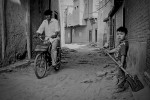 ON THE SILK ROAD
ON THE SILK ROAD
These pictures, all shot on film, were made with no assignment in hand and no particular desire to even make a coherent body of work. Just a sketch book made with the impressions of almost 9000 kilometers traveled by sleeper train, where I lived for more than one month. I was very impressed by the great difference in lifestyle and economic conditions between the Han (the majority ethnic group), the Tibetans in Labrang and the Uighurs (muslims) in Kashgar, home of the one of the most important markets, where every Sunday hundreds of farmers go to sell their goods. Located near the border with Tajikistan, Kyrgyzstan and the Taklamakan Desert, also known as the place of oblivion.
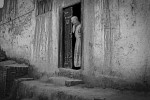 ON THE SILK ROAD
ON THE SILK ROAD
These pictures, all shot on film, were made with no assignment in hand and no particular desire to even make a coherent body of work. Just a sketch book made with the impressions of almost 9000 kilometers traveled by sleeper train, where I lived for more than one month. I was very impressed by the great difference in lifestyle and economic conditions between the Han (the majority ethnic group), the Tibetans in Labrang and the Uighurs (muslims) in Kashgar, home of the one of the most important markets, where every Sunday hundreds of farmers go to sell their goods. Located near the border with Tajikistan, Kyrgyzstan and the Taklamakan Desert, also known as the place of oblivion.
 ON THE SILK ROAD
ON THE SILK ROAD
These pictures, all shot on film, were made with no assignment in hand and no particular desire to even make a coherent body of work. Just a sketch book made with the impressions of almost 9000 kilometers traveled by sleeper train, where I lived for more than one month. I was very impressed by the great difference in lifestyle and economic conditions between the Han (the majority ethnic group), the Tibetans in Labrang and the Uighurs (muslims) in Kashgar, home of the one of the most important markets, where every Sunday hundreds of farmers go to sell their goods. Located near the border with Tajikistan, Kyrgyzstan and the Taklamakan Desert, also known as the place of oblivion.
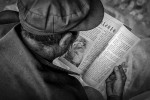 ON THE SILK ROAD
ON THE SILK ROAD
These pictures, all shot on film, were made with no assignment in hand and no particular desire to even make a coherent body of work. Just a sketch book made with the impressions of almost 9000 kilometers traveled by sleeper train, where I lived for more than one month. I was very impressed by the great difference in lifestyle and economic conditions between the Han (the majority ethnic group), the Tibetans in Labrang and the Uighurs (muslims) in Kashgar, home of the one of the most important markets, where every Sunday hundreds of farmers go to sell their goods. Located near the border with Tajikistan, Kyrgyzstan and the Taklamakan Desert, also known as the place of oblivion.
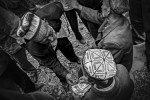 ON THE SILK ROAD
ON THE SILK ROAD
These pictures, all shot on film, were made with no assignment in hand and no particular desire to even make a coherent body of work. Just a sketch book made with the impressions of almost 9000 kilometers traveled by sleeper train, where I lived for more than one month. I was very impressed by the great difference in lifestyle and economic conditions between the Han (the majority ethnic group), the Tibetans in Labrang and the Uighurs (muslims) in Kashgar, home of the one of the most important markets, where every Sunday hundreds of farmers go to sell their goods. Located near the border with Tajikistan, Kyrgyzstan and the Taklamakan Desert, also known as the place of oblivion.
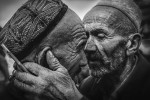 ON THE SILK ROAD
ON THE SILK ROAD
These pictures, all shot on film, were made with no assignment in hand and no particular desire to even make a coherent body of work. Just a sketch book made with the impressions of almost 9000 kilometers traveled by sleeper train, where I lived for more than one month. I was very impressed by the great difference in lifestyle and economic conditions between the Han (the majority ethnic group), the Tibetans in Labrang and the Uighurs (muslims) in Kashgar, home of the one of the most important markets, where every Sunday hundreds of farmers go to sell their goods. Located near the border with Tajikistan, Kyrgyzstan and the Taklamakan Desert, also known as the place of oblivion.
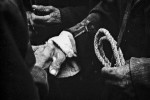 ON THE SILK ROAD
ON THE SILK ROAD
These pictures, all shot on film, were made with no assignment in hand and no particular desire to even make a coherent body of work. Just a sketch book made with the impressions of almost 9000 kilometers traveled by sleeper train, where I lived for more than one month. I was very impressed by the great difference in lifestyle and economic conditions between the Han (the majority ethnic group), the Tibetans in Labrang and the Uighurs (muslims) in Kashgar, home of the one of the most important markets, where every Sunday hundreds of farmers go to sell their goods. Located near the border with Tajikistan, Kyrgyzstan and the Taklamakan Desert, also known as the place of oblivion.
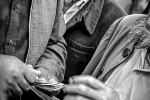 ON THE SILK ROAD
ON THE SILK ROAD
These pictures, all shot on film, were made with no assignment in hand and no particular desire to even make a coherent body of work. Just a sketch book made with the impressions of almost 9000 kilometers traveled by sleeper train, where I lived for more than one month. I was very impressed by the great difference in lifestyle and economic conditions between the Han (the majority ethnic group), the Tibetans in Labrang and the Uighurs (muslims) in Kashgar, home of the one of the most important markets, where every Sunday hundreds of farmers go to sell their goods. Located near the border with Tajikistan, Kyrgyzstan and the Taklamakan Desert, also known as the place of oblivion.
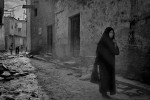 ON THE SILK ROAD
ON THE SILK ROAD
These pictures, all shot on film, were made with no assignment in hand and no particular desire to even make a coherent body of work. Just a sketch book made with the impressions of almost 9000 kilometers traveled by sleeper train, where I lived for more than one month. I was very impressed by the great difference in lifestyle and economic conditions between the Han (the majority ethnic group), the Tibetans in Labrang and the Uighurs (muslims) in Kashgar, home of the one of the most important markets, where every Sunday hundreds of farmers go to sell their goods. Located near the border with Tajikistan, Kyrgyzstan and the Taklamakan Desert, also known as the place of oblivion.
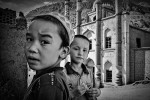 ON THE SILK ROAD
ON THE SILK ROAD
These pictures, all shot on film, were made with no assignment in hand and no particular desire to even make a coherent body of work. Just a sketch book made with the impressions of almost 9000 kilometers traveled by sleeper train, where I lived for more than one month. I was very impressed by the great difference in lifestyle and economic conditions between the Han (the majority ethnic group), the Tibetans in Labrang and the Uighurs (muslims) in Kashgar, home of the one of the most important markets, where every Sunday hundreds of farmers go to sell their goods. Located near the border with Tajikistan, Kyrgyzstan and the Taklamakan Desert, also known as the place of oblivion.
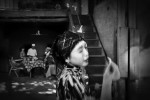 ON THE SILK ROAD
ON THE SILK ROAD
These pictures, all shot on film, were made with no assignment in hand and no particular desire to even make a coherent body of work. Just a sketch book made with the impressions of almost 9000 kilometers traveled by sleeper train, where I lived for more than one month. I was very impressed by the great difference in lifestyle and economic conditions between the Han (the majority ethnic group), the Tibetans in Labrang and the Uighurs (muslims) in Kashgar, home of the one of the most important markets, where every Sunday hundreds of farmers go to sell their goods. Located near the border with Tajikistan, Kyrgyzstan and the Taklamakan Desert, also known as the place of oblivion.
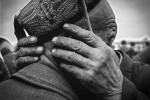 ON THE SILK ROAD
ON THE SILK ROAD
These pictures, all shot on film, were made with no assignment in hand and no particular desire to even make a coherent body of work. Just a sketch book made with the impressions of almost 9000 kilometers traveled by sleeper train, where I lived for more than one month. I was very impressed by the great difference in lifestyle and economic conditions between the Han (the majority ethnic group), the Tibetans in Labrang and the Uighurs (muslims) in Kashgar, home of the one of the most important markets, where every Sunday hundreds of farmers go to sell their goods. Located near the border with Tajikistan, Kyrgyzstan and the Taklamakan Desert, also known as the place of oblivion.
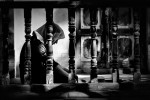 ON THE SILK ROAD
ON THE SILK ROAD
These pictures, all shot on film, were made with no assignment in hand and no particular desire to even make a coherent body of work. Just a sketch book made with the impressions of almost 9000 kilometers traveled by sleeper train, where I lived for more than one month. I was very impressed by the great difference in lifestyle and economic conditions between the Han (the majority ethnic group), the Tibetans in Labrang and the Uighurs (muslims) in Kashgar, home of the one of the most important markets, where every Sunday hundreds of farmers go to sell their goods. Located near the border with Tajikistan, Kyrgyzstan and the Taklamakan Desert, also known as the place of oblivion.
 ON THE SILK ROAD
ON THE SILK ROAD
These pictures, all shot on film, were made with no assignment in hand and no particular desire to even make a coherent body of work. Just a sketch book made with the impressions of almost 9000 kilometers traveled by sleeper train, where I lived for more than one month. I was very impressed by the great difference in lifestyle and economic conditions between the Han (the majority ethnic group), the Tibetans in Labrang and the Uighurs (muslims) in Kashgar, home of the one of the most important markets, where every Sunday hundreds of farmers go to sell their goods. Located near the border with Tajikistan, Kyrgyzstan and the Taklamakan Desert, also known as the place of oblivion.
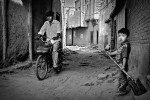
These pictures, all shot on film, were made with no assignment in hand and no particular desire to even make a coherent body of work. Just a sketch book made with the impressions of almost 9000 kilometers traveled by sleeper train, where I lived for more than one month. I was very impressed by the great difference in lifestyle and economic conditions between the Han (the majority ethnic group), the Tibetans in Labrang and the Uighurs (muslims) in Kashgar, home of the one of the most important markets, where every Sunday hundreds of farmers go to sell their goods. Located near the border with Tajikistan, Kyrgyzstan and the Taklamakan Desert, also known as the place of oblivion.
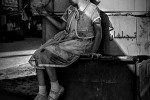 ON THE SILK ROAD
ON THE SILK ROAD
These pictures, all shot on film, were made with no assignment in hand and no particular desire to even make a coherent body of work. Just a sketch book made with the impressions of almost 9000 kilometers traveled by sleeper train, where I lived for more than one month. I was very impressed by the great difference in lifestyle and economic conditions between the Han (the majority ethnic group), the Tibetans in Labrang and the Uighurs (muslims) in Kashgar, home of the one of the most important markets, where every Sunday hundreds of farmers go to sell their goods. Located near the border with Tajikistan, Kyrgyzstan and the Taklamakan Desert, also known as the place of oblivion.
 ON THE SILK ROAD
ON THE SILK ROAD
 ON THE SILK ROAD
ON THE SILK ROAD
 ON THE SILK ROAD
ON THE SILK ROAD
 ON THE SILK ROAD
ON THE SILK ROAD
 ON THE SILK ROAD
ON THE SILK ROAD
 ON THE SILK ROAD
ON THE SILK ROAD
 ON THE SILK ROAD
ON THE SILK ROAD
 ON THE SILK ROAD
ON THE SILK ROAD
 ON THE SILK ROAD
ON THE SILK ROAD
 ON THE SILK ROAD
ON THE SILK ROAD
 ON THE SILK ROAD
ON THE SILK ROAD
 On THE SILK ROAD
On THE SILK ROAD
 ON THE SILK ROAD
ON THE SILK ROAD
 ON THE SILK ROAD
ON THE SILK ROAD
 ON THE SILK ROAD
ON THE SILK ROAD
 ON THE SILK ROAD
ON THE SILK ROAD

 ON THE SILK ROAD
ON THE SILK ROAD
 ON THE SILK ROAD
ON THE SILK ROAD
 ON THE SILK ROAD
ON THE SILK ROAD
 ON THE SILK ROAD
ON THE SILK ROAD
 ON THE SILK ROAD
ON THE SILK ROAD
 ON THE SILK ROAD
ON THE SILK ROAD
 ON THE SILK ROAD
ON THE SILK ROAD
 ON THE SILK ROAD
ON THE SILK ROAD

 ON THE SILK ROAD
ON THE SILK ROAD
 ON THE SILK ROAD
ON THE SILK ROAD
 ON THE SILK ROAD
ON THE SILK ROAD
 ON THE SILK ROAD
ON THE SILK ROAD
 ON THE SILK ROAD
ON THE SILK ROAD
 ON THE SILK ROAD
ON THE SILK ROAD
 ON THE SILK ROAD
ON THE SILK ROAD
 ON THE SILK ROAD
ON THE SILK ROAD
 ON THE SILK ROAD
ON THE SILK ROAD
 ON THE SILK ROAD
ON THE SILK ROAD
 ON THE SILK ROAD
ON THE SILK ROAD
 ON THE SILK ROAD
ON THE SILK ROAD
 ON THE SILK ROAD
ON THE SILK ROAD
 ON THE SILK ROAD
ON THE SILK ROAD
 ON THE SILK ROAD
ON THE SILK ROAD
 ON THE SILK ROAD
ON THE SILK ROAD
 ON THE SILK ROAD
ON THE SILK ROAD
 ON THE SILK ROAD
ON THE SILK ROAD
 ON THE SILK ROAD
ON THE SILK ROAD
 ON THE SILK ROAD
ON THE SILK ROAD

 EXHIBITION
EXHIBITION
 ON THE SILK ROAD
ON THE SILK ROAD
 ON THE SILK ROAD
ON THE SILK ROAD
 ON THE SILK ROAD
ON THE SILK ROAD
 ON THE SILK ROAD
ON THE SILK ROAD

 ON THE SILK ROAD
ON THE SILK ROAD
 ON THE SILK ROAD
ON THE SILK ROAD
 ON THE SILK ROAD
ON THE SILK ROAD
 ON THE SILK ROAD
ON THE SILK ROAD
 ON THE SILK ROAD
ON THE SILK ROAD
 ON THE SILK ROAD
ON THE SILK ROAD
 ON THE SILK ROAD
ON THE SILK ROAD
 ON THE SILK ROAD
ON THE SILK ROAD
 ON THE SILK ROAD
ON THE SILK ROAD
 ON THE SILK ROAD
ON THE SILK ROAD
 ON THE SILK ROAD
ON THE SILK ROAD
 ON THE SILK ROAD
ON THE SILK ROAD
 ON THE SILK ROAD
ON THE SILK ROAD
 ON THE SILK ROAD
ON THE SILK ROAD

 ON THE SILK ROAD
ON THE SILK ROAD